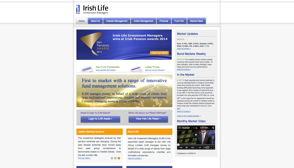Having built up your pension pot for retirement, the next big decision you will make is how you will take your pension at retirement. Understanding the options you have at retirement can be difficult, so we’ve included a few samples here to help you.
Remember: These samples are not recommendations. Every member of a pension scheme has personal circumstances to take into account when it comes to retirement. Always talk to your financial adviser or broker about your options before making any decision.
| Pension Plan Type: | |
| Retirement Age: | |
| Pension Pot Size: | |
| Additional Voluntary Contributions: | |
| Highest Final Salary: | |
| Other Pension Pots: |
What does it all mean – refer to this section if you are unsure of any of these terms
Annuity
This is your pension for life and is paid to you monthly. Under certain circumstances, it can be paid to you, to your spouse or civil partner or to a surviving dependant if you die and is usually bought with the money you have accumulated in your pension pot. An annuity can be purchased with any provider; you are not restricted to buying your annuity with the company you have been saving with.
ARF
An Approved Retirement Fund is a special investment fund held in your own name and is usually bought with the savings you have accumulated in your pension pot.
- You can have more than one ARF.
- Money can be transferred from one ARF to another if you have more than one.
- You can withdraw money as and when you wish. Money withdrawn from an ARF is subject to income tax, and the Universal Social Charge, and PRSI (if you are liable for this.)
AVC
Additional Voluntary Contributions are extra savings which you can make towards your pension pot.
Buy out bond/PRB
Personal Retirement Bond or Buy Out Bond is a pension policy purchased in your name that allows you to transfer your pension fund when changing job without having to transfer to your new employer's pension scheme. When you retire, you can then use the proceeds of the PRB to provide retirement benefits.
DB
Defined Benefit is a type of pension plan in which an employer promises a specified monthly benefit on retirement that is normally predetermined by your earnings and your length of service.
DC
Defined Contribution is a type of pension plan where your benefits are determined solely by the combination of the contributions paid into the scheme by you and your employer and the investment return earned on those contributions.
Fund/pension pot
This is your pension pot, the total amount that you have saved for your retirement.
Highest final salary
Your pensionable earnings at retirement on which your pension is calculated. This may be fixed at a particular date or based on the average of a number of years.
Pensionable service
The period of service which is taken into account in calculating your pension benefits.
PRSA
A Personal Retirement Savings Account is a pension plan that provides you with a pension pot at retirement. Unlike an occupational pension scheme, you are the owner of the PRSA and if you change your job, you can take your PRSA with you.
Tax-Free Lump Sum
If you are a member of a pension plan, you may be entitled to a lump sum at retirement. For most people, their lump sum entitlement can be taken tax free. The lifetime limit for tax-free cash from all pension plans is currently €200,000. However, the actual amount of lump sum you may be able to take will be subject to Revenue limits – and can be either based on your service and salary with your employer or in some cases based on 25% of your fund value.
Other Pension Pots
This refers to any other pension plans/policies that you may have apart from your current pension plan. If you have these, you should talk to your Financial Adviser before making any decisions.



